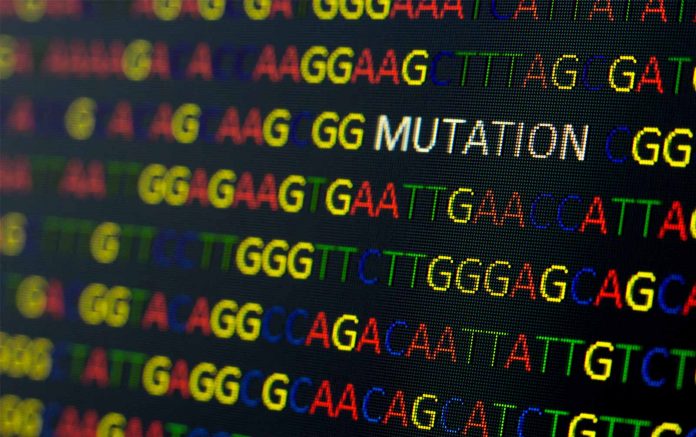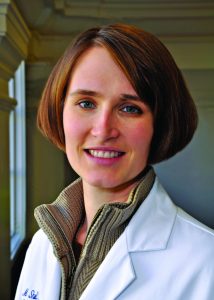Availability of next-generation sequencing continues to improve, but current technology cannot speed turnaround time of results.
Posted: February 2018
The standard of care for all patients diagnosed with advanced nonsquamous NSCLC is to undergo genetic testing at diagnosis.
“We now know that close to half of all patients with nonsquamous NSCLC will have an oncogenic driver mutation,” said Anne S. Tsao, MD, director of the Mesothelioma and Thoracic Chemo- Radiation Programs at Th e University of Texas MD Anderson Cancer Center. “Some of the most common abnormalities that are targetable with drugs include EGFR mutations, ALK translocation, ROS1 rearrangements, and genetic mutations of BRAF V600E, and RET rearrangements.” Cancers that test positive for these common abnormalities can undergo treatment with targeted therapies in place of systemic chemotherapy or immunotherapy. In the past, polymerase chain reaction (PCR) testing was a standard method to look for common mutations in NSCLC, but clinicians had to know what mutations they were looking for in advance. Fluorescence in situ hybridization (FISH) testing can be used to look for translocations in ALK and ROS1, and immunohistochemistry (IHC) can be used to test for PD-L1.
However, more recently, the advent of next-generation sequencing (NGS) has allowed clinicians to look for and identify a wider range of targetable mutations, amplifications, translocations, or rearrangements, all with one test. Unfortunately, turnaround time for NGS can take much longer than PCR, IHC, or FISH testing.
Timing of Tests
Performing genetic testing on tumor samples is one step in a multistep process, according to Lynette M. Sholl, MD, chief of the Pulmonary Pathology Division and Associate Director of the Center for Advanced Molecular Diagnostics at Brigham and Women’s Hospital. When a patient presents, fi rst something abnormal must be identified on a scan, and then a biopsy must be scheduled and performed. Material from the biopsy is sent to the pathology lab, where the diagnosis is confirmed, and then on to a molecular lab, where genetic testing is initiated.
“The timing from the initial realization that something is wrong until having a treatment plan in hand can potentially be quite lengthy because there are a lot of moving parts,” Dr. Sholl said.
In some cases, this process can be sped up with the use of cell-free DNA testing— the examination of extracellular DNA circulating in the blood, known as a “liquid biopsy.” When using cell-free DNA testing, clinicians do not need tissue from the biopsy and are oft en testing for one specific mutation, such as EGFR.
“It can be very variable, but under optimal conditions we have been able to confirm a diagnosis and get critical genomics within a week,” Dr. Sholl said. “When not using cell-free DNA, more commonly from biopsy to genomics in hand, the process can range from 2 weeks to a month.”
Ignacio I. Wistuba, MD, chair of the department of translational molecular pathology at The University of Texas MD Anderson Cancer Center, agreed, adding that in approximately 10% of cases it may take longer because of a small sample size or because of some artifact that must be worked out. “In some cases, it may take even longer because people don’t account for the time it takes the tissue to get to the lab,” Dr. Wistuba said. “It may take 1 day if the lab is in the same institution, or it could take a couple weeks if the tissue needs to be shipped from pathology to the molecular lab.”
These delays are more likely to occur in practices or hospitals that do not see a lot of patients with lung cancer, he explained. For patients with advanced disease who need treatment, these delays can be costly. In some cases, clinicians might send samples out for NGS and simultaneously perform cell-free DNA testing in the hope of identifying one of the more common mutations quickly.
Wider Availability
Lower-volume centers may have a new NGS option with the recent U.S. Food and Drug Administration (FDA) and Centers for Medicare & Medicaid Services approval of the first breakthrough-designated, NGS-based in vitro diagnostic test, the FoundationOne CDx (F1CDx). The test can detect genetic mutations in 324 genes and two genomic signatures in any solid tumor type. (See Breaking News on page 14 for details.)
Unlike other companion diagnostics tests approved by the FDA that match one test to one drug, the F1CDx provides information on a wide variety of mutations that may help guide treatment of patients with cancer. At the same time as the approval, the Centers for Medicare & Medicaid Services (CMS) proposed coverage of the F1CDx.
“The timing from the initial realization that something is wrong until having a treatment plan in hand can potentially be quite lengthy because there are a lot of moving parts.”
–Lynette M. Sholl, MD
According to the Dr. Sholl, approval of this product is unlikely to improve turnaround time for NGS because there is a fixed amount of time required to complete this type of testing.
“The chemistry required to perform the assay requires several days,” she said. “That includes getting the specimen, extracting the DNA, pulling down part of the DNA that you want to sequence, performing the sequencing … when you tack on interpretation, quality control, and the actual reporting, it will be quite difficult to get turnaround time below 2 weeks.”
However, the CMS coverage approval could create some significant issues for the molecular testing community, Dr. Sholl said. This approval could be an indication that, moving forward, CMS may only pay for NGS if it is performed with an FDA-approved assay.
“For instance, if CMS decides it is only going to reimburse for testing using a certain provider and all other payers fall in line, that means that all patients are going to have to send samples to that provider,” Dr. Sholl said. “That is not great for patients because there are dozens of labs across the country that can do this within the confines of a hospital, within the context of the type of care the patients are getting locally, and within the context of diagnostic scenarios that they deal with routinely in those settings. Labs will have to shut down because they won’t be getting paid.”
Dr. Sholl said that if the CMS requires FDA approval for all NGS, then the FDA must provide a feasible model for labs to submit local assays for approval with a timely turnaround time in terms of FDA review.
Despite the unknowns, the possibilities for the future of genetic testing in NSCLC are myriad. Moving forward, Dr. Wistuba said he had no doubt that NGS will be available in most centers throughout the world and will be the most widely used method for genetic testing. “Hopefully, we are able to see more advances in technology that allow us to achieve more rapid turnaround time in the molecular lab,” he added.
Dr. Tsao agreed, “It is only a matter of time before technology is capable of meeting very rapid turnaround times that will lead to more testing at a higher frequency.”
As NGS becomes more widespread, Dr. Tsao hopes that more patients with other histologic subtypes of lung cancer may begin to get tested.
“For example, in small cell lung cancer actionable mutations haven’t been identified yet,” Dr. Tsao said. “[NGS] may introduce more options and more treatments for patients if we are able to discover additional targets that they may carry.” ✦












